Sofrito is the heart and soul of Caribbean cuisine and the knock-out flavor base of many of its dishes. It’s budget-friendly, easy to make, and pure magic in almost any savory recipe. If you want to kick up your cooking prowess a hundred notches with just one technique, THIS IS IT.
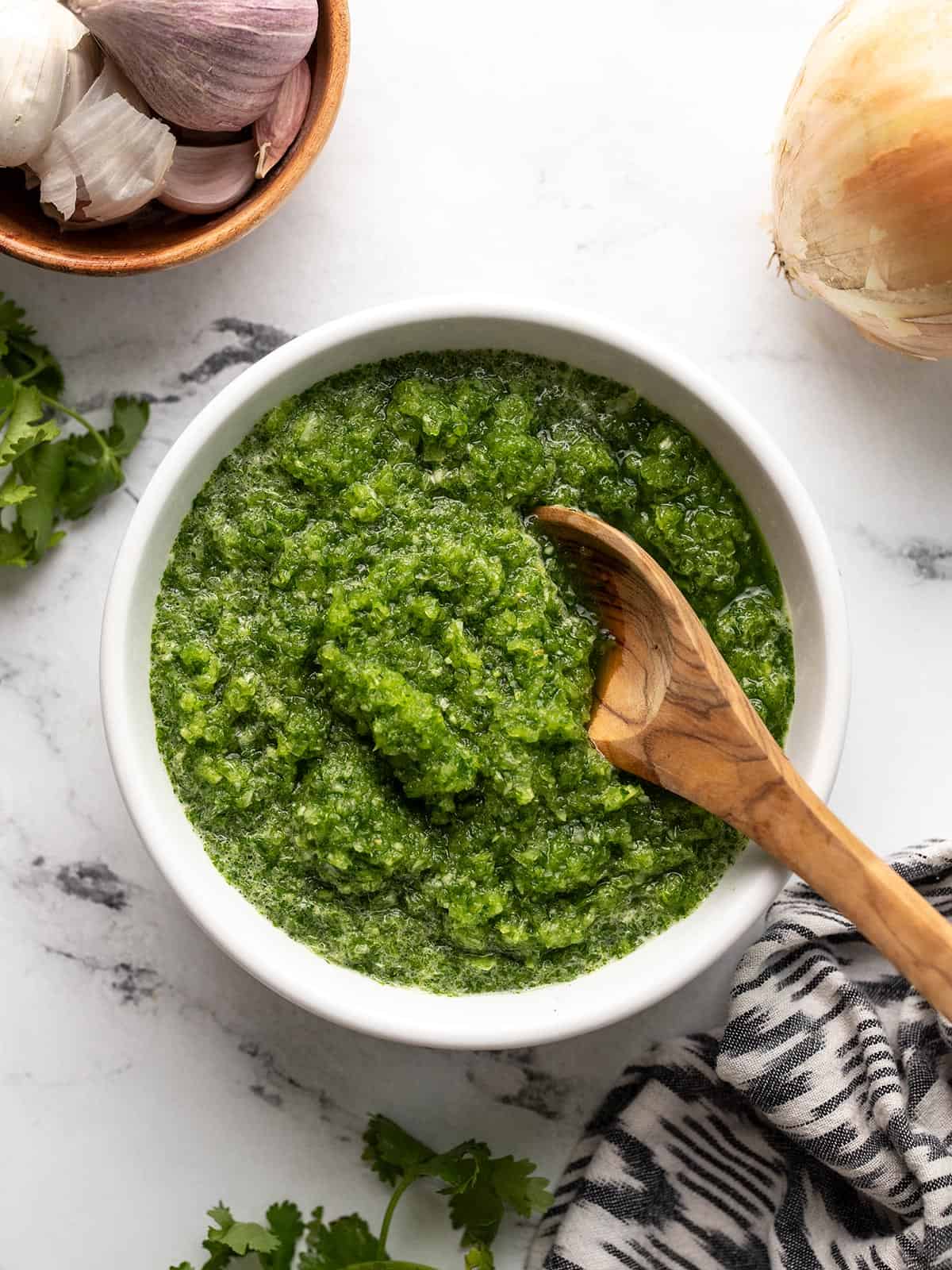
A Note On Authenticity
This is not a historically authentic recipe. We strive to create recipes that are accessible to everyone, which means ingredients need to be available at a mainstream budget grocery store. We test recipes using the least amount of steps, tools, and ingredients while still honoring the spirit of the recipe. I was born and raised in Puerto Rico and look forward to a time when our ingredients are available in mainstream markets. Until then, buen provecho!
What is sofrito?
Sofrito originated in Spain, and the word refers to a technique where you fry aromatics to release flavor compounds. The sauce took on different forms as the Spanish colonized the Caribbean, and islanders recreated sofrito with available ingredients. In Puerto Rico, where I was born and raised, sofrito is called recaito, after recao, an herb that grows wild throughout the island and gives the puree its distinctive bright green color.
How do you make sofrito?
In its most basic form, sofrito is a mix of aromatics like peppers, onions, garlic, and herbs. Think of it like the Latin version of a mirepoix or the holy trinity. Except making it is as simple as busting out your blender or food processor. Of course, if you don’t have these kitchen tools, you’ll have to rely on old-fashioned elbow grease and mince the ingredients. Either way, the results will always be fantastic.
What’s in Sofrito?
The ingredient list for sofrito changes depending on the region. In Spain, the sauce includes tomatoes; in the Dominican Republic, it contains vinegar; in Puerto Rico, neither of those ingredients made the cut. Traditionally, Boricuas (i.e., Puerto Ricans) make sofrito with cubanelle peppers, a sweet pepper known as ají dulce, garlic, onion, and, as I mentioned earlier, recao. This pungent herb is a distant relative of cilantro and is also known as Chinese parsley or sawtooth coriander. You can usually find cubanelle peppers, ají dulce, and recao at an Asian or Latino supermarket. When I can’t find these traditional ingredients, I sub them with green bell pepper and cilantro.
There are many versions of sofrito and recipes vary from family to family. Some use annatto oil, salt pork, tomato sauce, and additional herbs and spices. No matter what the ingredients, sofrito is usually the first thing to hit the pan, where it is lightly fried until your kitchen smells like heaven. (Am I the only one that thinks heaven will smell like something amazing’s cooking?) No matter your religious musings, I’ve seen many islanders get choked up at the first whiff of sofrito. TRUST ME. This sauce is powerful stuff.
How do you store sofrito?
A little sofrito goes a long way, so you’ll always have leftovers when you make a batch. Store it in an airtight container in your fridge for up to a month. Or do like every abuela (Spanish for grandma) does on the island: freeze any leftovers in an ice cube tray. Then transfer the cubes to a freezer-safe container, where they will stay fresh for up to three months.
How is Sofrito Used?
Honestly, many savory recipes would benefit from a few tablespoons of sofrito. Of course, it’s imperative that you use it in Caribbean dishes, like my recipe for Arroz con Pollo (Puerto Rican chicken and rice). But you should also try it in your favorite stews, soups, beans, and sauces. For example, a few tablespoons would be spectacular in this easy chili, this hearty vegetable barley soup, or this dreamy Spanish chickpeas and rice.
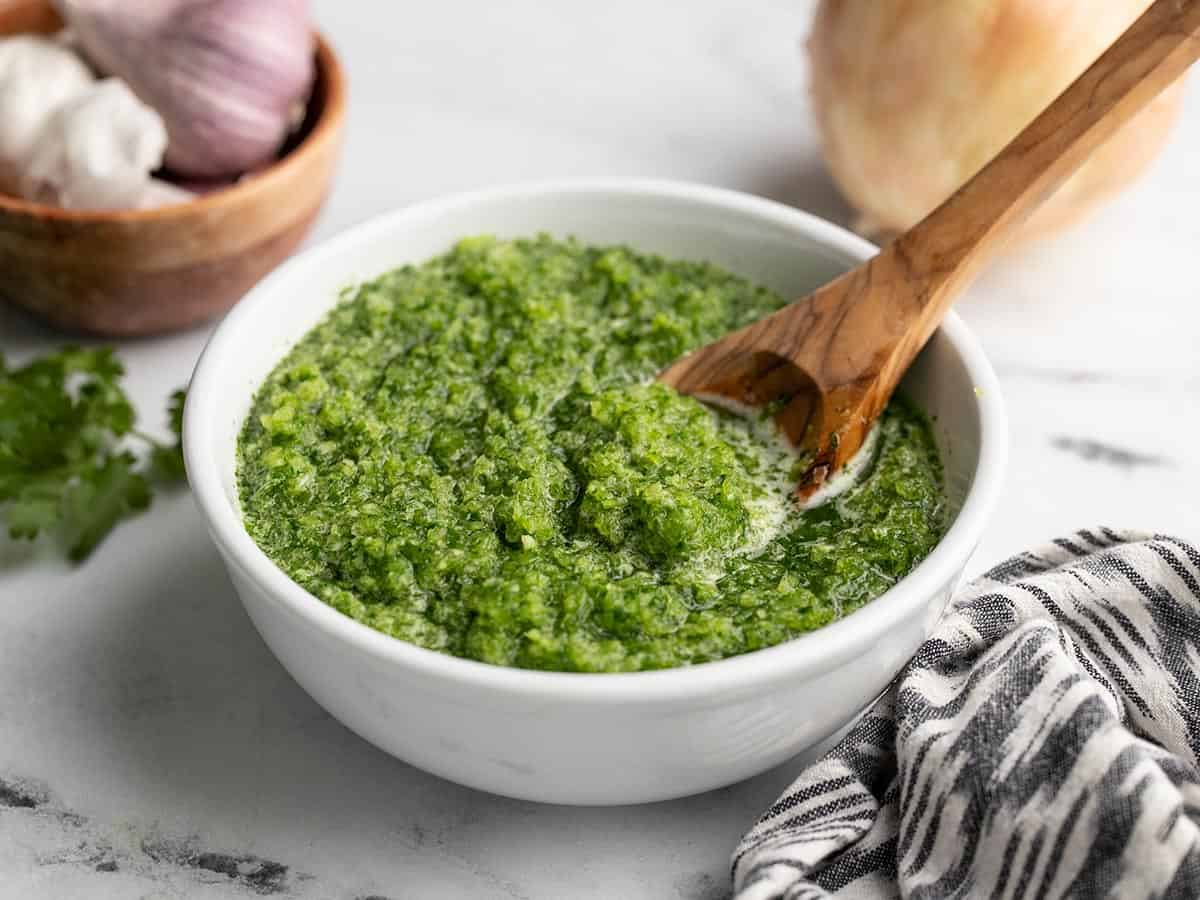
Puerto Rican Sofrito
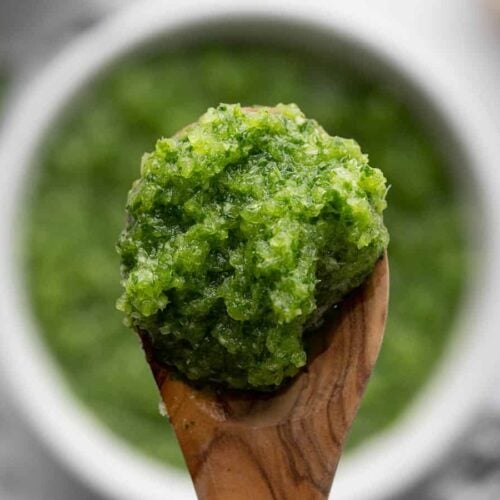
Ingredients
- 1 yellow onion ($0.37)
- 1 green bell pepper ($0.79)
- 1 bunch fresh cilantro ($0.89)
- 6 cloves garlic ($0.48)
Instructions
- Peel the onion and deseed bell pepper, then quarter them. Rinse the cilantro and chop the bunch roughly.
- Add the onion, bell pepper, cilantro, and garlic to the bowl of a food processor. Pulse until a smooth, thick puree forms.
- Use the sofrito in a recipe immediately, store in an air-tight container for up to a month in the fridge, or portion into ice cube trays and store in the freezer for up to three months.
See how we calculate recipe costs here.
Nutrition
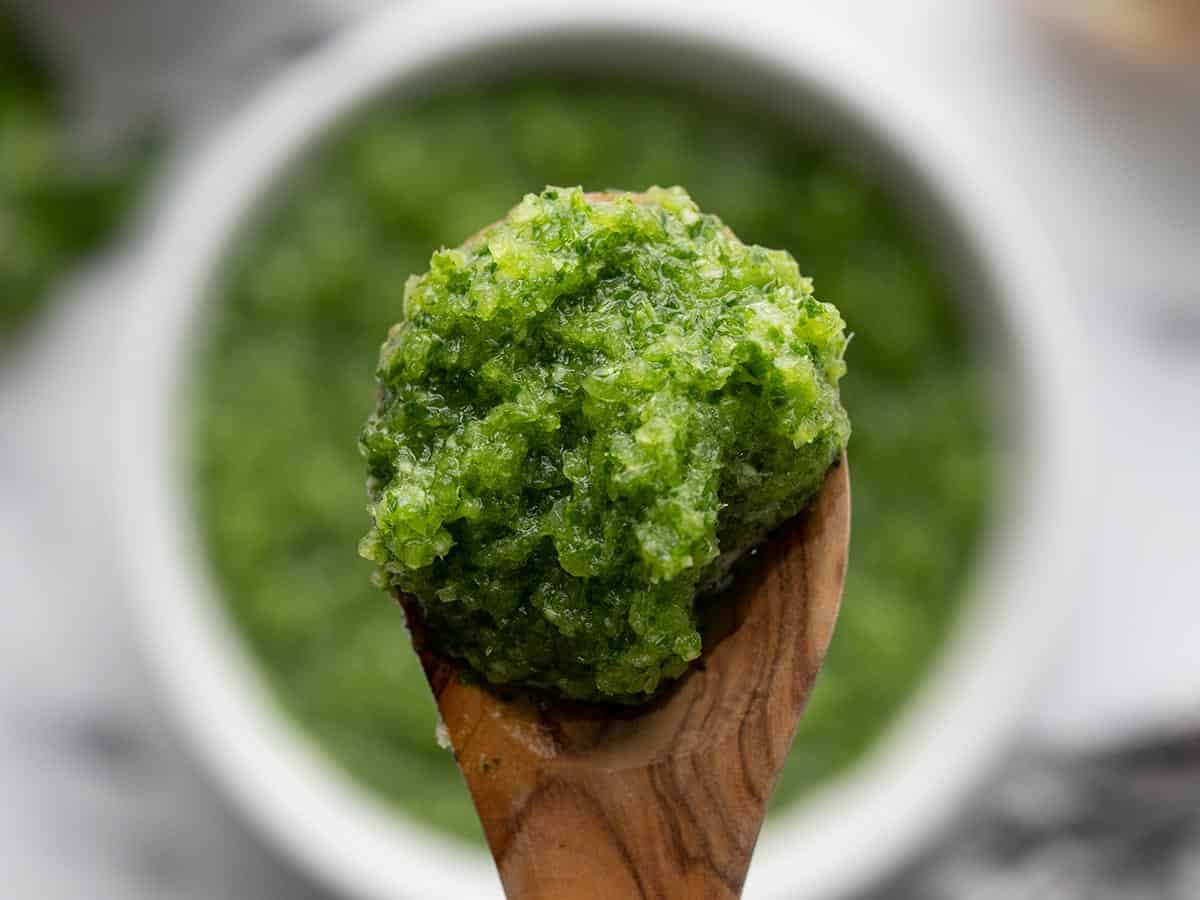
How to Make Puerto Rican Sofrito- Step by Step Photos
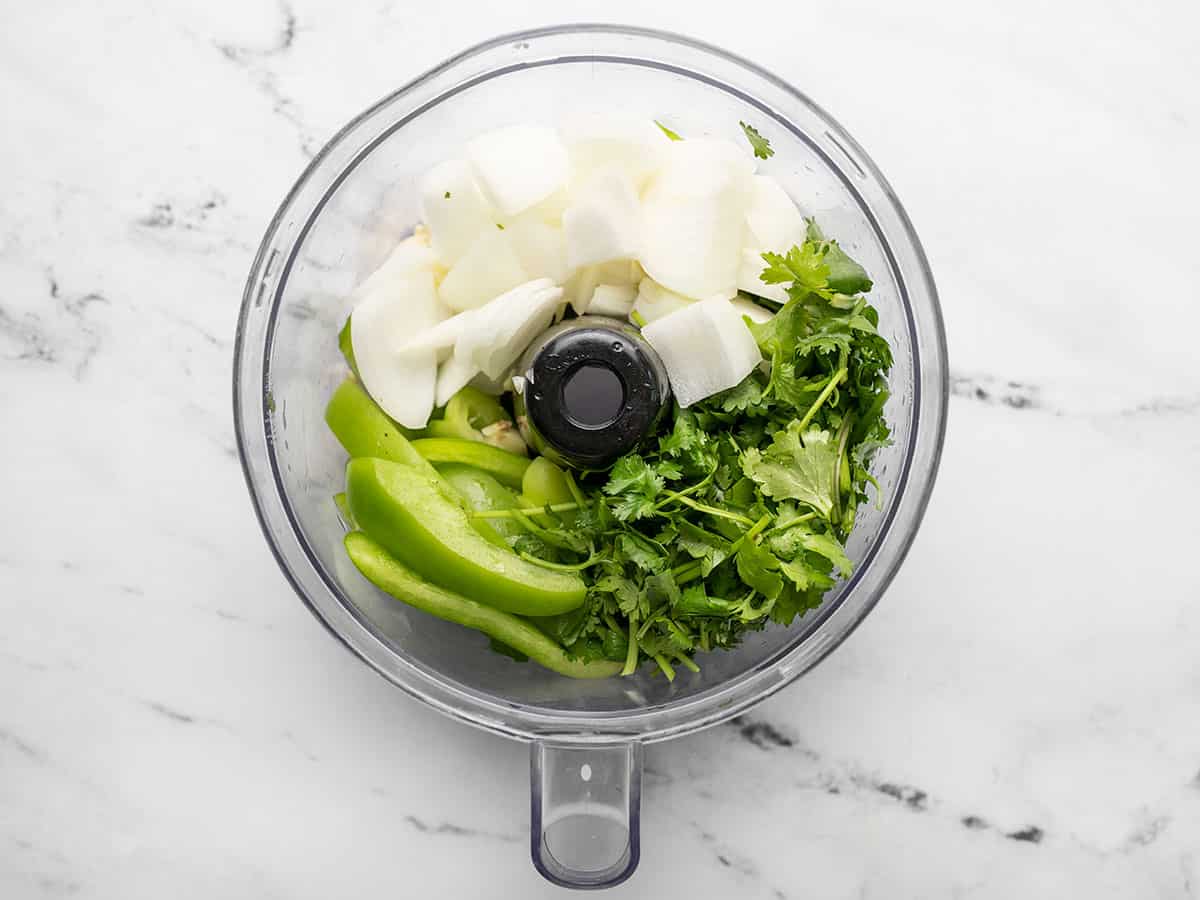
Prep and quarter the onion and bell pepper. Rinse and chop the cilantro. Add the onion, bell pepper, cilantro, and garlic to the bowl of a food processor or blender.
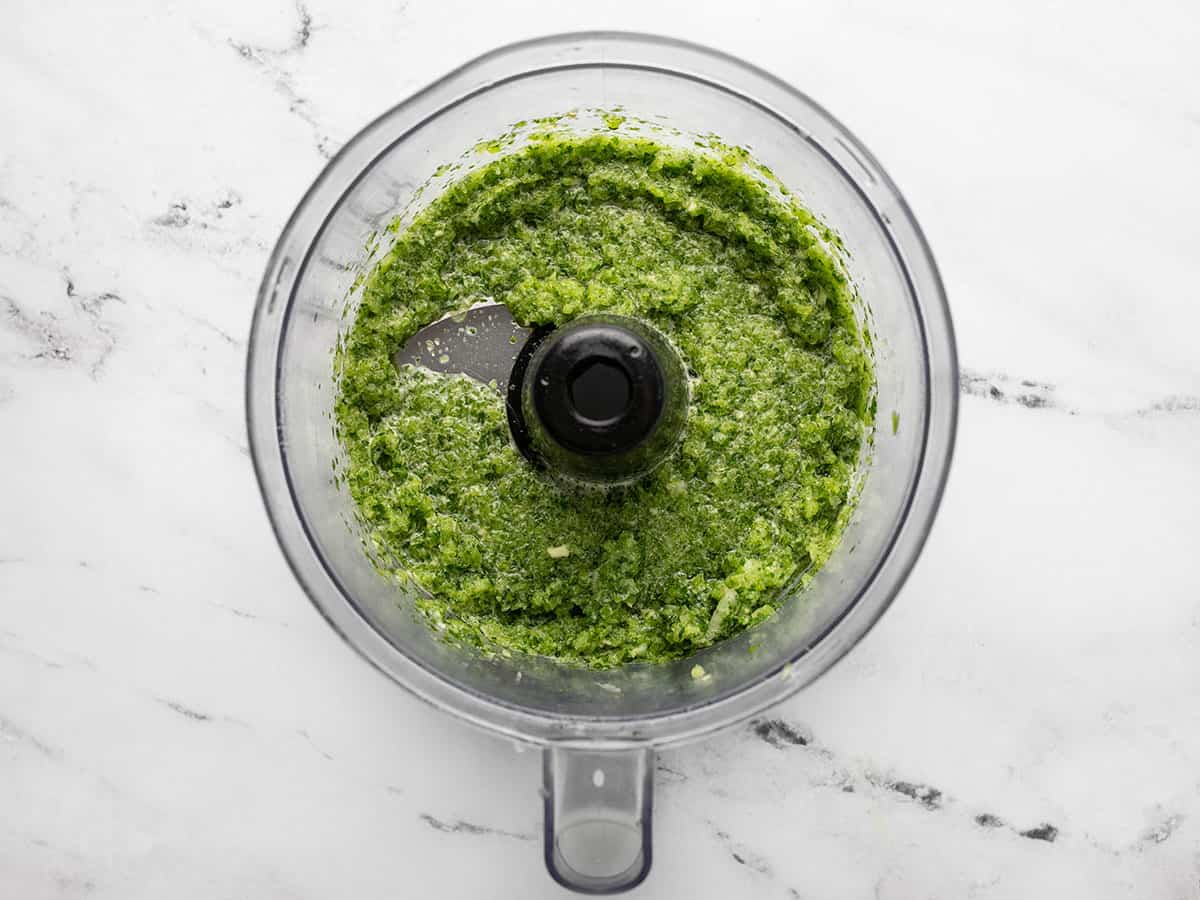
Pulse until the ingredients transform into a smooth, thick puree. If the blades get stuck cutting through the ingredients, add a little olive oil to move things along.
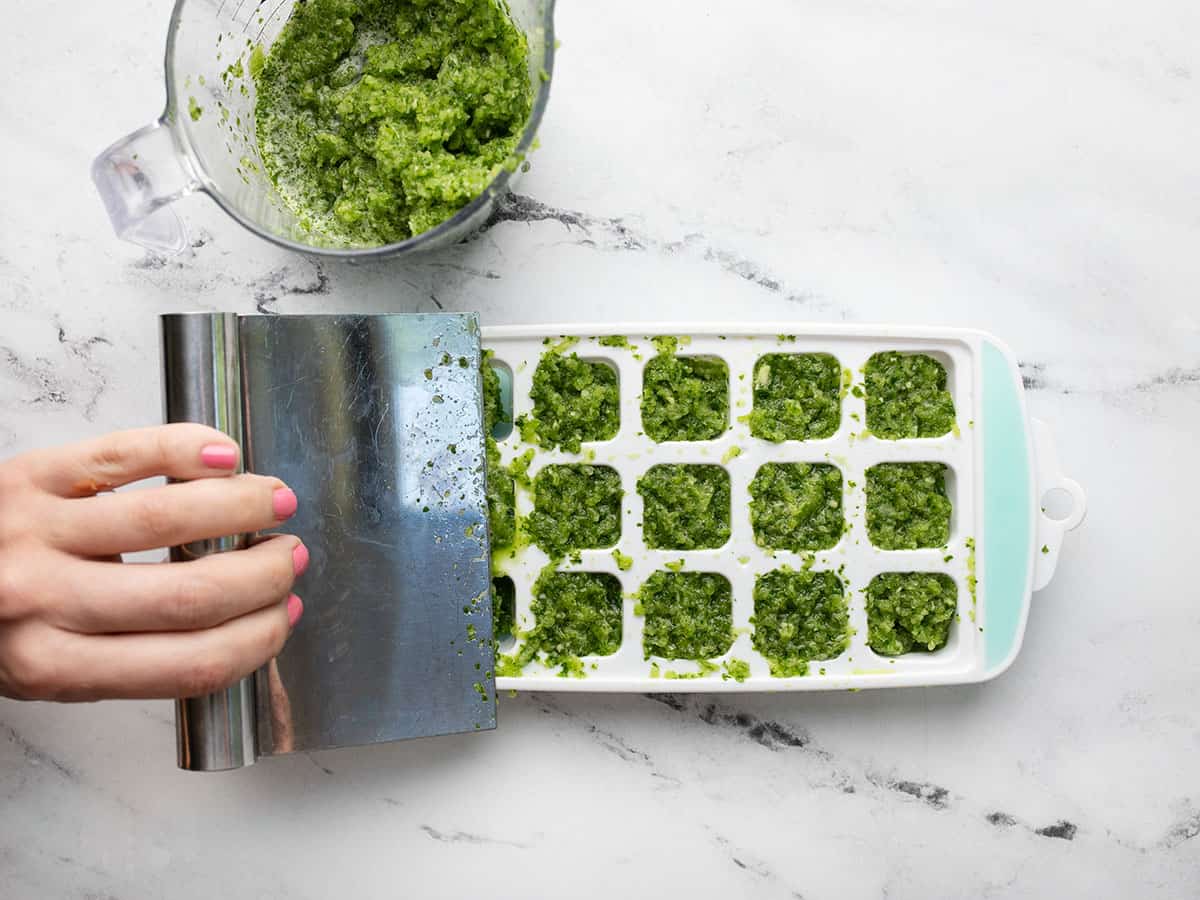
You can use the sofrito immediately, store in an air-tight container in the fridge for about 2 weeks or portion into an ice cube tray and freeze. Place the cubes into a freezer-safe container and store for up to three months.
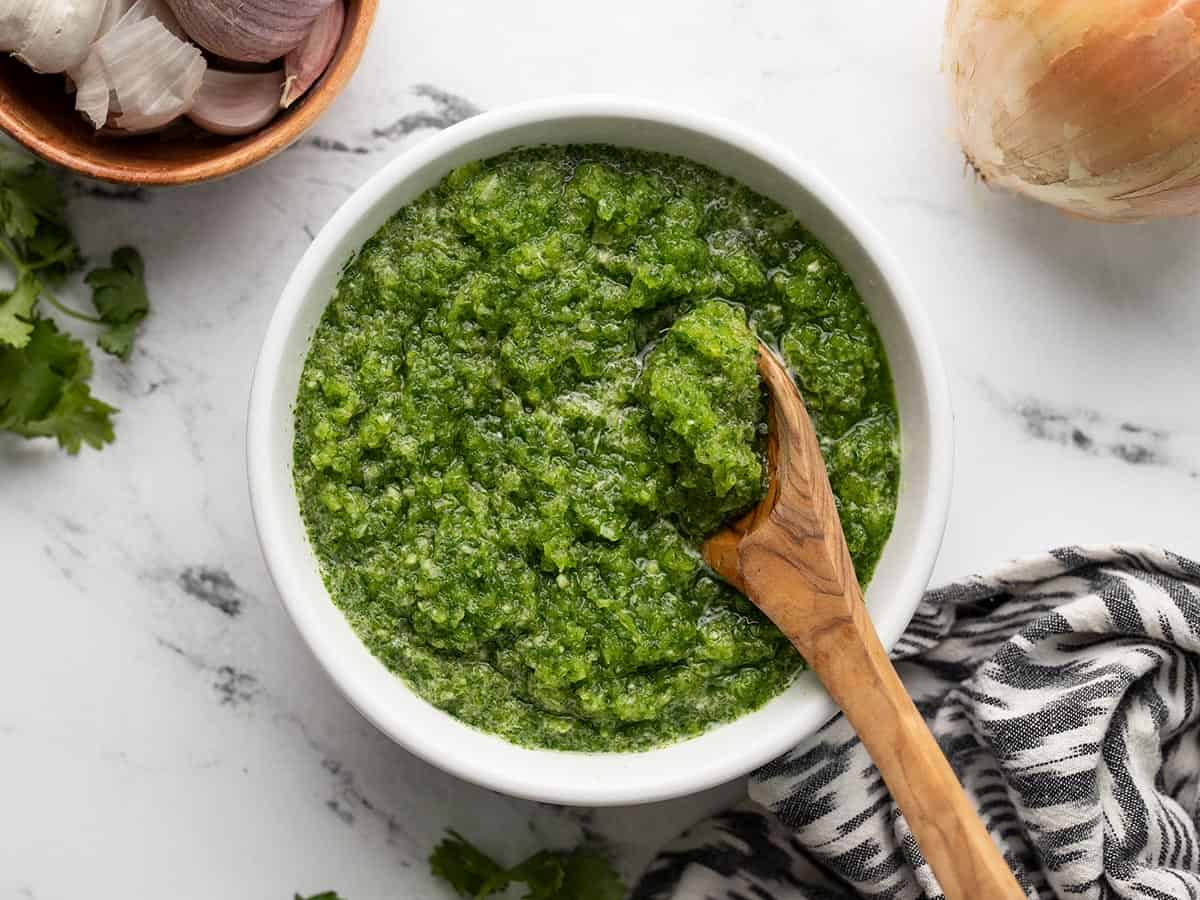


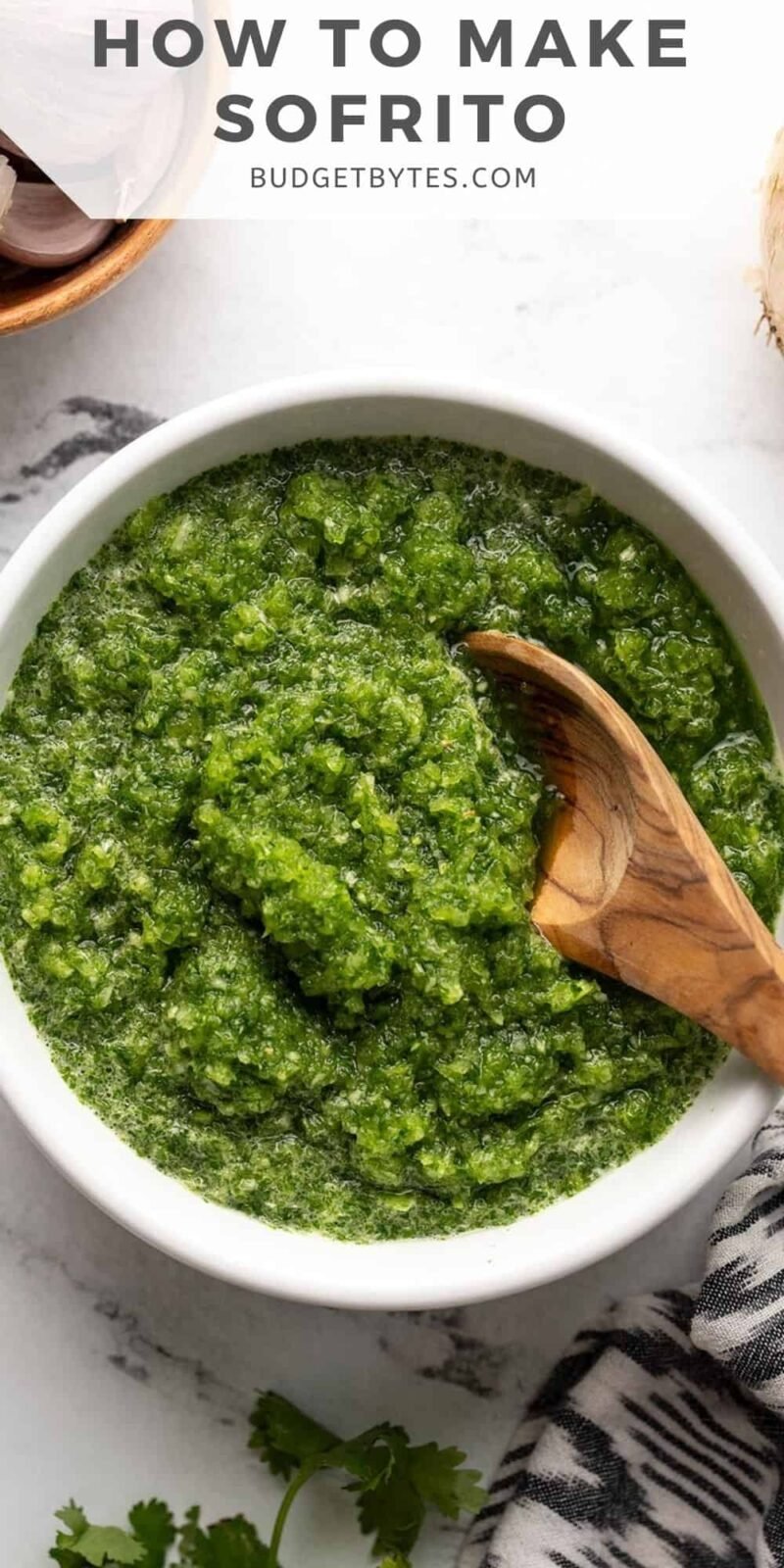
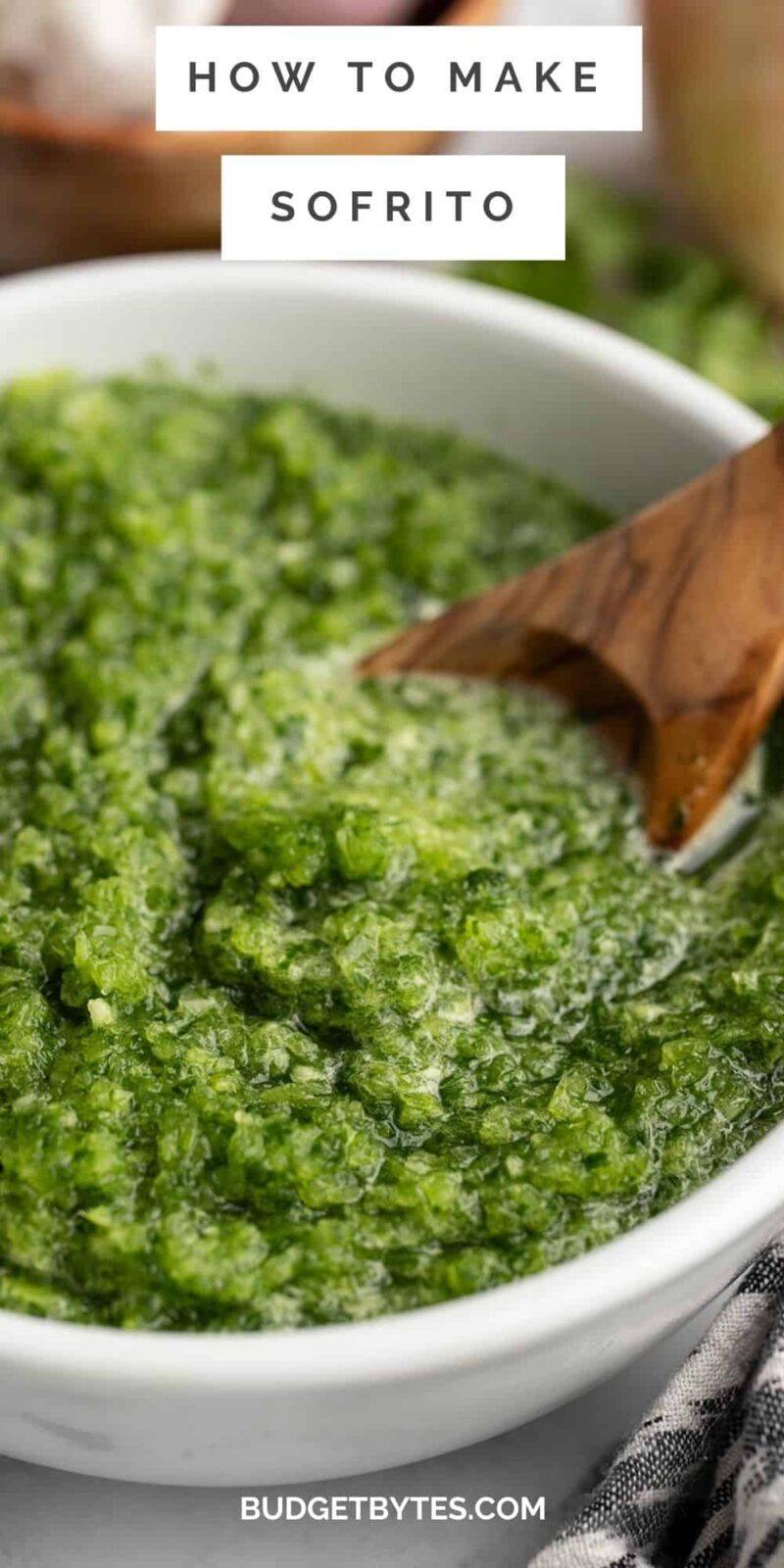
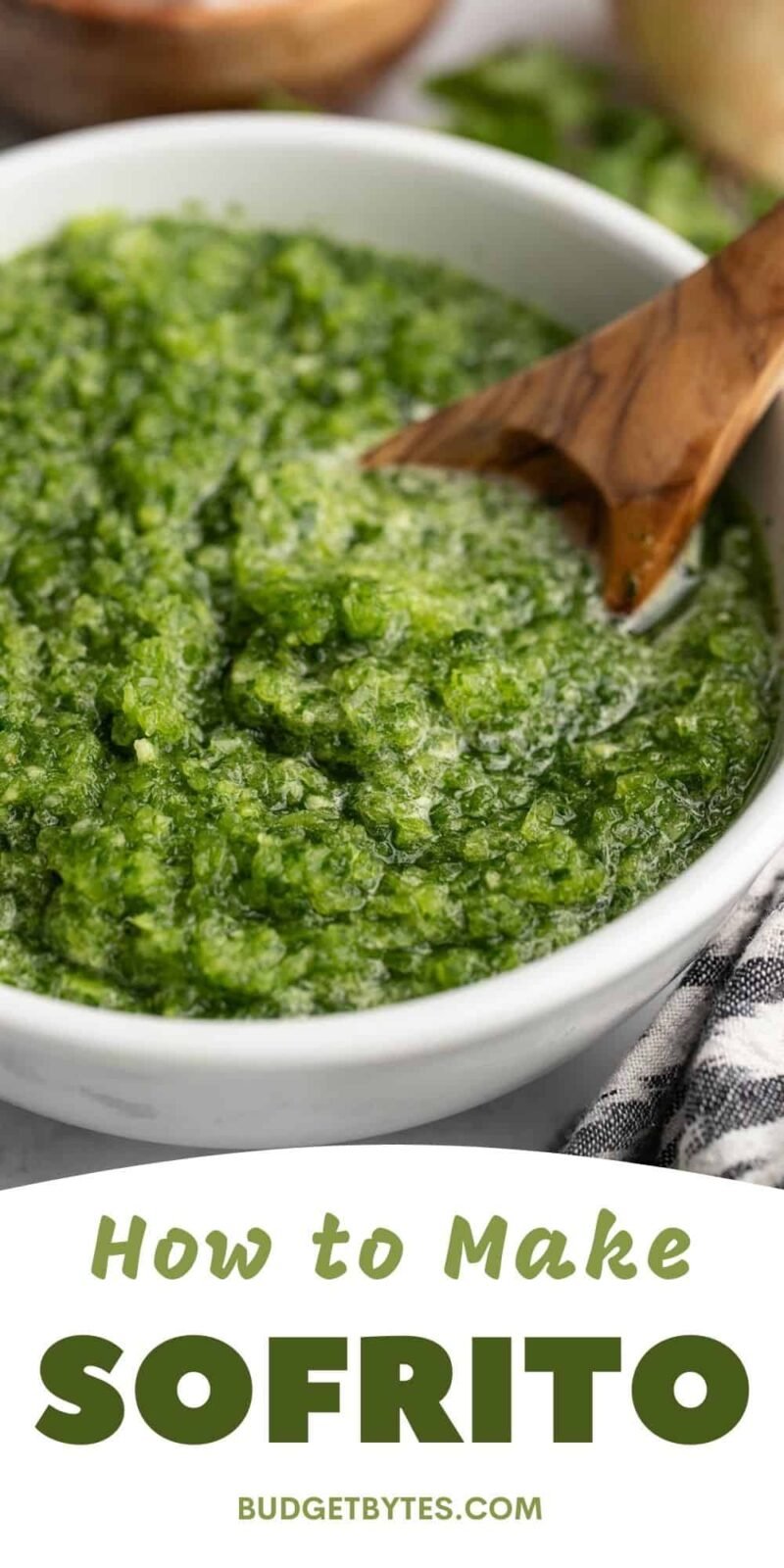
I am short on garlic and only have two cloves. Can I still make this and add more garlic to my actual recipe? Or do you have a suggestion?
Use garlic powder or garlic salt if you have it. If you use garlic salt make sure to recuse the salt in the actual recipe you are making with sofrito. No matter what you do, it will taste great. Adding a flavor base will always take your dish to new heights, even if it isn’t perfectly executed. XOXO -Monti
HAHA this is not sofrito!
As I state in the blog post, this is recaito. It is a very basic version (based on Chef Wilo Benet’s version) as this is a budget blog, and most people are shopping at large chain grocers. I also list all of the things you can add to it to amp it up, including salt pork and annatto oil. Try reading the post before commenting. XOXO -Monti
Hi Abigail. Please read the blog post before leaving a comment like this. I’m a Puerto Rican chef, born and raised on the island. As I write in the post, this is recaito. This is a very basic sofrito, based on Chef Wilo Benet’s recipe, one of the most acclaimed chefs in Puerto Rican cuisine, and a personal friend of mine. Please keep in mind that this is a budget blog, and most of our audience shops in large chain supermarkets where items like annatto seeds are not stocked, so we have to keep things simple. As I write in the post, there are quite a few things you can add, including salt pork and annatto oil etc. Thanks for being here. XOXO -Monti
This is new to me, who “cooking brings no joy” (yet my family wants fed dinner 🤪) So you don’t cook it first, which helps retain the freshness, all zoomed up for ease of use. Excellent, can’t wait to give this a whirl!! Thanks 🍀
Amazing recipe just like my abuela used to make!
Awwwww!!!! I love this so much!!! XOXO -Monti
Glad to have this really tasty base for so many application. Funny you mentioned Parsley. I was thinking of trying a second batch with parsley and some oregano for my Mediterranean dishes. I was cogitating using the same base with some Asian seasonings for my Asian cooking! Would add a lot of flavor without salt..to stir fries and soups such as Pho and many other dishes. Poblano peppers for a Mexican flair. So many possibilities, Wow. This going to be a hard working recipe at our house..I do have a packet of seeds for Culantro, hope I can plant some in the Spring.
Maryann! I love how your mind works. Good luck with the cilantro seeds! XOXO -Monti
Another awesome recipe! Thanks Beth! And I love your new ‘do!! 💁♀️
Aji dulce (little green peppers related to habaneros but a sweet version) is different from regular green peppers but you can always tell what part of the island you are from if you use green peppers vs aji dulce. My family from quebradillas uses green peppers, my fiancés family from Vieques uses ajíes dulce. Thank you for sharing your version. It’s so nice to see all the variations!
I am one of those people that cannot eat cilantro. I’m wondering if regular curly leaf or flat leaf parsley would do. I know so Caribbean!!!
Dude. Never apologize for your tastes! I’m a big believer in making recipes work for you. PERIOD. I would def use a flat leaf Italian parsley and see where that takes you. Happy cooking! XOXO -Monti
I just made it for the Arroz Con Pollo with flat leaf parsley and it was DELICIOUS! Wish I could like cilantro but just can’t.
Amazing!!! Thanks for making it and for making it yours! XOXO -Monti
HI,
My Wife is Puerto Rican and her family taught me how to make sofrito. For a true authentic sofrito, culantro is used not cilantro. Culantro is a long leaf plant with jagged edges also known as recao. There is a huge difference between cilantro and culantro. Many asian and latino markets carry culantro. I grow my own culantro and save the seeds from year to year. I also use the ají dulce peppers when I can get them but bell peppers as a substitute works great. Your recipe is spot on. I do the exact same as you do with freezing the sofrito in ice cube trays. I use it for a lot of my cooking.
Thanks for sharing the recipe.
Hi Ron! Saludos to the wifey and thanks for being here! As I mentioned in the blog post, recao (AKA culantro, Chinese Parsley, Mexican coriander) is indeed the traditional herb used in sofrito, and OF COURSE there is a huge difference between cilantro and culantro. But when you can’t find the traditional ingredients, as is so often the case with our island recipes, you can sub with cilantro leaves and stems. The stems add an herbaceous pungency to the sauce, much in the same way recao does.
I have had tremendous success fermenting my sofrito. I bought little airlocks that are built into mason jar lids to make it easier, and after that it’s pretty much the same process as making sauerkraut. I ferment for a couple of weeks, then put it in the fridge, where it stores indefinitely-ish. The result is saltier and more sour than it would be if fresh, but that works well for my tastes. It also means I never have to worry about onions going bad — any onion that looks soft, I just make a batch of sofrito with it.
I generally keep a mirepoix blend and a blend that works better for Asian/Indian dishes, with onion, garlic, red pepper, ginger, and some chili peppers. When you have this on hand, you end up using it constantly. Boxed mac and cheese, scrambled eggs, even fried spam with fermented mirepoix tossed in the pan first? Shockingly divine.
MARIE, I’M COMING OVER!!! Fermented sofrito sounds amazing!! Thanks for being here. XOXO -Monti
Marie, I am fascinated with the thought of fermenting sofrito! How much salt do you add to the batch, as this recipe doesn’t call for any.
General rule for fermenting is 3% the weight of the other ingredients. So a scale is very helpful here.
Anything you ferment should stay under a water line while fermenting — that keeps it an anaerobic environment. 3% salt will usually make the environment hostile to stuff you don’t want, and will draw out enough liquid from the ingredients to keep everything under a water line (though you might need to shove things down a bit). But you can also add water if needed.
You can buy weights to keep things held down under the water to help, but you can also fill a bag with water, seal it, and leave it on top.
That’s the quick and dirty version! I recommend doing some quick googling about fermentation to get a good idea of the basics. It can get real complicated real quick, so don’t get overwhelmed — it’s a forgiving process, most things that could go wrong in fermenting will smell and look bad, and you can start out fermenting real cheap ingredients (like cabbage) as you learn, so if things go wrong, all you’ve lost is time. There are ways to get fancier and really perfect the process, but you don’t need to get artisanal to start, you can just chop, salt, jar, and wait.
It’s been a real cost saver with how iffy produce has been! And during grocery shortages, it was really great to have long-storing veggies always on hand.
As a Louisiana girl married to a Puerto Rican….I love this. We keep sofrito in the freezer! And use it for lots of dishes. Thanks for your all your great recipes and content!! Keep it coming.
Wepa!!! Thanks Juliana! Hola to the hubs.❤️ XOXO -Monti
Lovely recepi! Me personally would not use 6 garlic cloves, they were a bit overpowering. I adjudged it with an extra bellpepper. Beautyful and yummi!!
Love the adaptation! -XOXO Monti
I would love to try this with your Arroz con Pollo you mentioned, but I can’t find recipe. Could I get the link?
What other herbs would be good inn this? I have the gene where cilantro tastes like soap.
Hi Jasmine! Try looking for Chinese parsley, as that is traditionally the herb that is used. However, it is more pungent than cilantro, though it’s not quite the same flavor profile. It won’t really be sofrito with a different flavor profile, but experiment with Italian or curly parsley. I’m all about making a recipe work for you. XOXO -Monti
This is a similar concept to Haitian epis.
LOOOOOVE Haitian Epis!!! XOXO -Monti